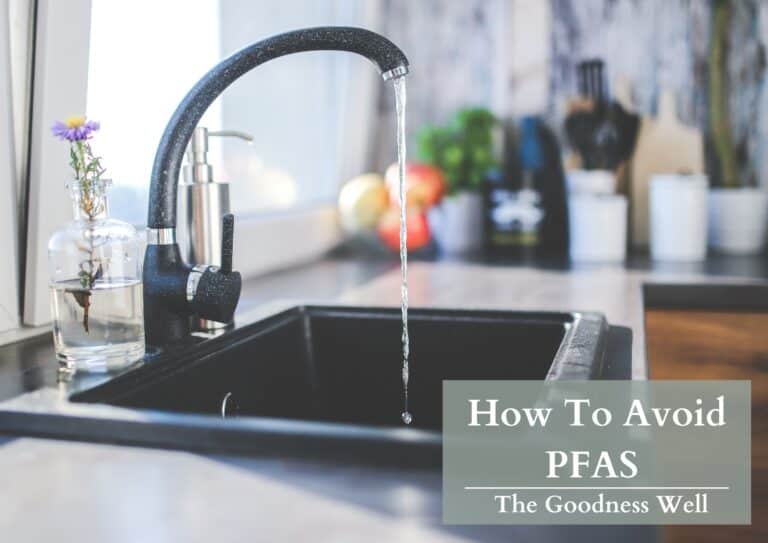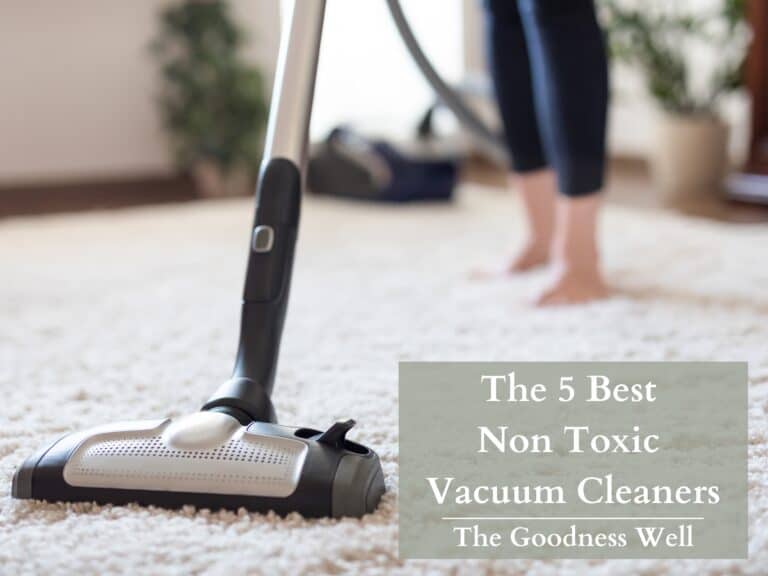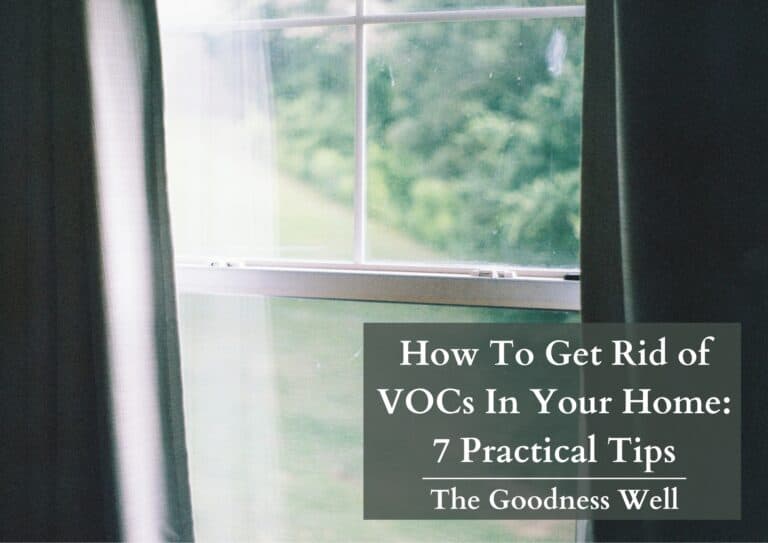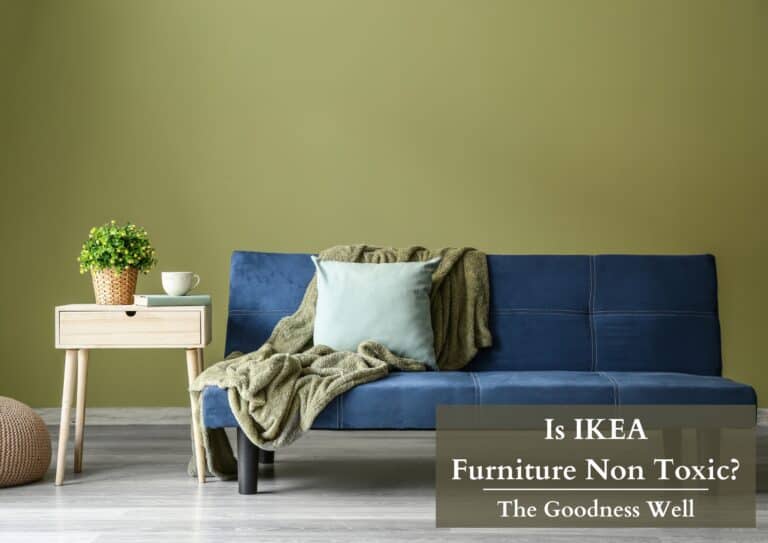What Are VOCs? Uncovering The Air Pollutants In Your Home
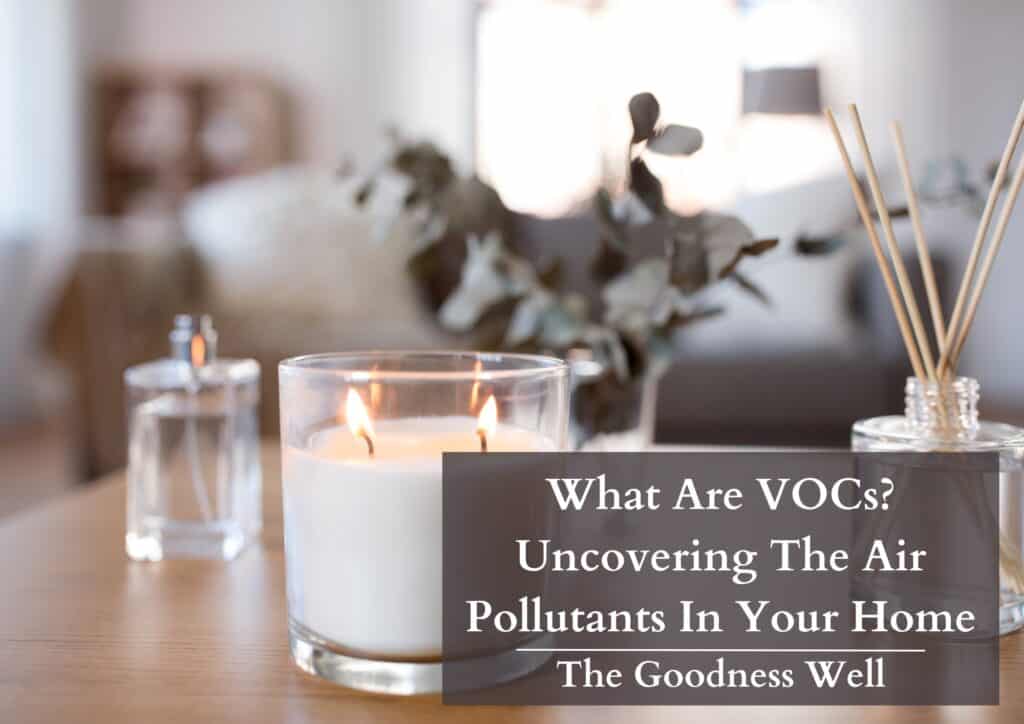
What are VOCs? Well, we all know about all the pollution outdoors but what about inside our homes?
From your cozy couch to your bath and body work candles, VOCs like these are causing more pollution in your home than you realize.
We’ll talk all about these chemicals in this article but check out our other article for tips and tricks to get rid of VOCs from your home.
TL;DR
Volatile Organic Compounds (VOCs) are chemicals that vaporize easily at room temperature. They are very common in household products like paints, cleaners, and furnishings, and can significantly pollute indoor air. These chemicals, including formaldehyde and benzene (which are linked to cancer), are emitted as gases and can lead to health issues like eye irritation, headaches, and organ damage. Understanding the risks of indoor VOCs is a big step in creating a non-toxic home environment.
We are reader-supported. So some links in this post may be affiliate links, which means we may earn a small commission if you make a purchase. Learn more
What Are VOCs?
Volatile Organic Compounds (VOCs) are a large group of chemicals that vaporize easily at room temperature and pressure. They are found in many everyday products and materials, emitting gases into the air. They can come from both natural and synthetic sources.
Common VOC’s Around Us
- Formaldehyde: Found in pressed wood products, adhesives, and some cleaning products.
- Benzene: Found in tobacco smoke, gasoline, and some household cleaners.
- Xylene: Found in some paints, lacquers, and adhesives.
- Toluene: Found in some paints, paint thinners, and nail polish removers.
- Acetone: Found in some nail polish removers and household cleaners.
- Polybrominated diphenyl ethers (PBDEs): found in electronics, furniture, and textiles for their fire-retardant properties.
You might think about all those exhaust fumes from other cars when thinking about VOCs but most of them we breathe in are right inside our homes.
Like what?
Sources in Your Home
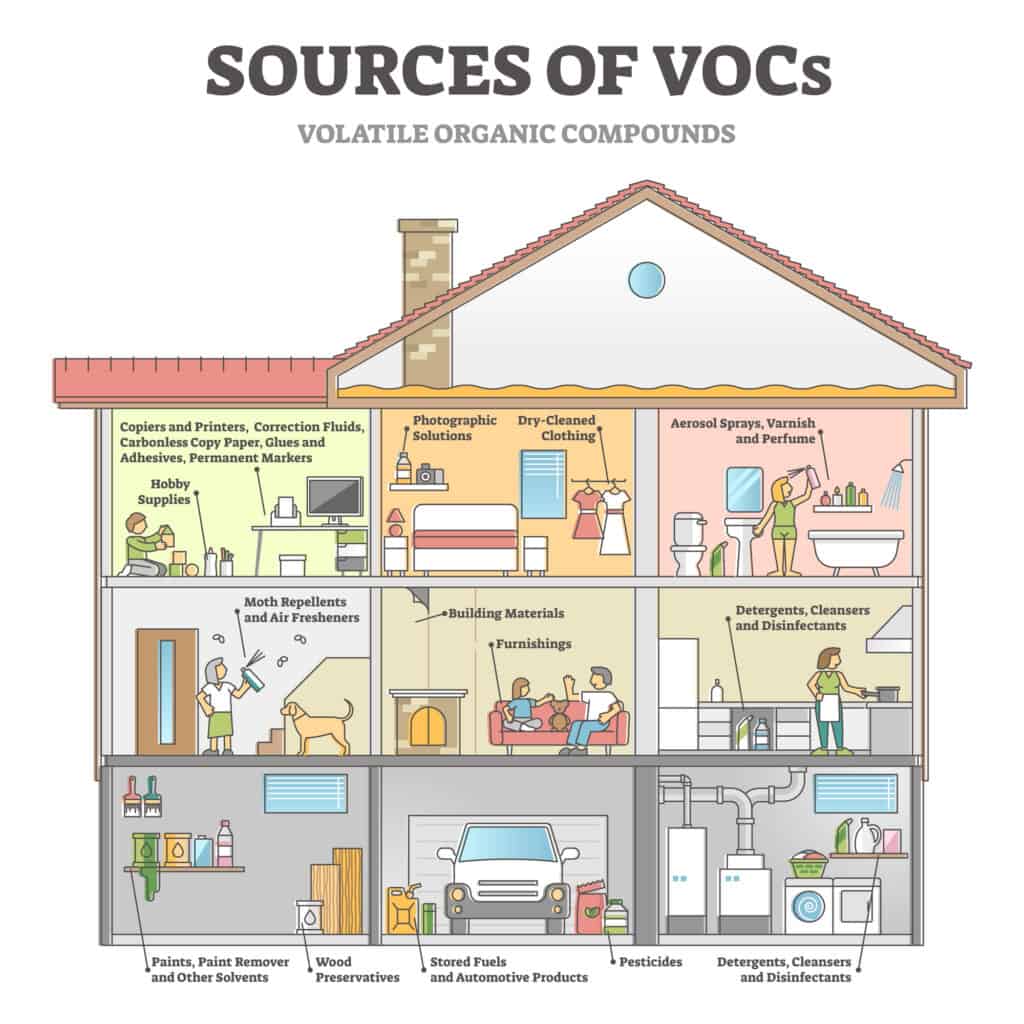
There are all sorts of VOC sources in our home including:
- Paints, Varnishes, and Solvents
- Cleaning and Disinfecting Products
- Air Fresheners and Mothballs
- Carpets, Upholstery, and Textiles
- Building Materials
- Personal Care Products
- Scented Candles
- Inks and Glues
- Plastics
- Workout equipment
Doing some renovating? This causes a huge release of many VOCs (think: fresh paint, solvents, building materials, glues, etc.)
According to Northern Arizona University, engaging in certain activities such as paint stripping has shown VOC levels 1,000 times greater than the typical outdoor levels, and this concentration can persist for several hours.
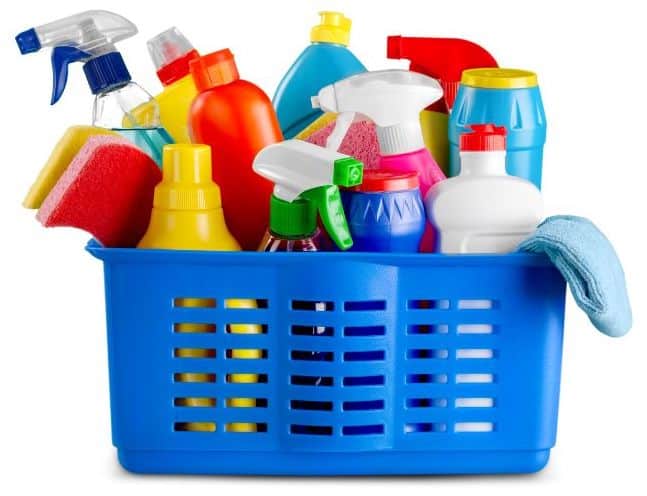
Also, think about those times you’re scrubbing your bathroom to death and you’ve got your bleach, comet, and other cleaners filling the air with their fumes.
This is a classic example of heavy-duty toxic VOCs filling your lungs.
When these products emit these chemicals into the air, it’s referred to as “off-gassing”.
Understanding off-gassing
When you get that new carpet, bed, or other furniture, the “new smell” coming from those is actually VOCs being released into the air by solvents used in the manufacturing of these products.
This is a process called off-gassing.
Mattresses can be very notorious for this. The American Chemical Society found that your body heat can cause a mattress to release much more VOCs at night time.
Not a great time for this as your nose and mouth are near the mattress all night, obviously. This is a good reason to choose mattresses without any toxic chemicals.
Along with poor ventilation, this is why you can have a high VOC level in the bedroom compared to other places in the home.
So how do VOCs affect your health?
VOC Health Effects
When you smell things such as paint, gasoline, or dry-erase markers, the fumes you breathe in contain VOCs.
For example, you know that somewhat sweet smell gasoline has? That’s benzene, a very common VOC that the International Agency for Research on Cancer (IARC) classifies as “carcinogenic to humans”.
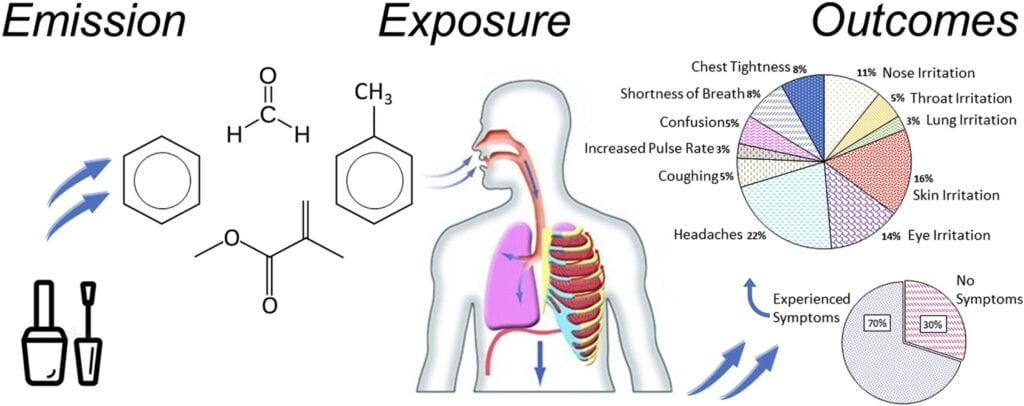
According to the Environmental Protection Agency (EPA), VOCs can have a range of potential health effects, from short-term symptoms to long-term consequences.
These effects depend on the chemical and time of exposure as well.
In the short term, exposure to VOCs can cause:
- Irritation of the eyes, nose, and throat
- Headaches
- Dizziness
- Nausea
Even if you’re someone that doesn’t have immediate symptoms to VOCs, they are still harmful over time.
“Health effects associated with poor indoor air quality (IAQ) are most likely driven by chronic low-level exposure to some of these compounds, including gases such as ozone and carbon monoxide, but most importantly also to chemicals with high vapor pressure at room temperature, named VOCs”
National Library of Medicine
Some VOCs, like formaldehyde and benzene, are known or suspected carcinogens and can increase the risk of cancer over time.
Children, the elderly, and people with respiratory or cardiovascular conditions may be especially vulnerable to the health effects of VOC exposure.
Understanding the health risks of these chemicals hits a little too close to home, literally.
Final Thoughts
Becoming aware of the hidden chemicals (especially in our homes) secretly affecting our health is just another step towards a non-toxic home and better health overall.
Now that we’ve shed light on this issue, check out our other article for tips on getting rid of these VOCs from your home.
Thanks for reading!


